How shifts in the candidate pool should change your focus toward candidate expectations
We’ve all heard of the great resignation or labor shortage that’s left its mark on nearly every industry. But perhaps the problem isn’t that there aren’t enough candidates. Instead, perhaps the behaviors of the candidate pool have changed and, as a business community, we’ve just been slow to recognize that and respond appropriately.
The goal of this article is to encourage you to change your focus away from hiring to the real issue: candidate expectations, which will help you understand how to hire right, right now.
At Balance, we place thousands upon thousands of people each year in the US & Canada. So you can imagine how crucial it is that we stay in tune with shifts in market behaviors, and this particular shift has been fascinating – and one that we’ve had great success at responding to.
In surveying our clients on their perceived top operational challenges of 2022, nearly 90% (89%) of those surveyed responded that hiring was their #1 challenge.
So, we dug in deeper to see how they were responding to that #1 challenge, and here is what we found:
- 74% – Hiring more recruiters
- 53% – Investing in recruiting automation technology
- Increasing pay
- Offering creative employee incentives
As you can see, very few companies are talking about adjusting their recruitment process to accommodate candidate expectations, which is a huge missed opportunity.
That’s not to say that the other areas aren’t important. They are. And it’s worth spending a second going through a few of them:
- Hiring more recruiters – There’s no doubt that hiring is a numbers game. If you touch enough people, you will find the right person for the job. But the rate by which it’s possible to be successful is diminishing.
- Recruiting automation – This allows companies like yours to touch more people. And there are very cool technologies out there that are here to stay and will be a big part of the future. But sourcing candidates is only part of the problem. You need to get them to want to join your company and to want to stay long term.
- Increasing pay – There’s no doubt about it, pay is important to candidates. You have to be competitive in the market, but how much can you raise your pay rates? Paychex – one of the largest payroll processing companies in the country – surveyed how pay rates equate to job longevity and here is what they found a salary increase of 3% to 10% would be unlikely to make an impact on people staying in their current job. So how much are you willing to increase the pay rates since moderate increases aren’t shown to keep them at your company anyway.
All of these are viable strategies and one or more of these should likely be a part of your overall strategy, but if you are not evolutionizing the candidate’s journey from application to hire, you will not hit your desired results.
To hire right, right now, you must first start by looking at the shifts in the behaviors of today’s candidate population.
Look at who you’re recruiting to fill these roles. It’s no longer the baby boomers. They’re leaving the job market in droves. It’s not even Gen X anymore. What we’re seeing here is a material shift. Baby boomers are retiring in record numbers, while at the same time Millennials and GenZ-ers are entering the workforce in record numbers.
In fact, According to a 2021 Gallup poll, Gen Z and millennials combined represent 46% of the full-time US workforce. And that % will only continue to grow.
The important shift that we have to pay attention to is not the shift in age, but a shift in what is important to candidates. We have to first acknowledge that we’re trying to attract and retain a population that thinks very differently from their predecessors and has an entirely different set of priorities.
If you take great care in building your candidate experience based on what’s important to the candidate – If you evolutionize that candidate’s journey to fit the current labor pool – you will not only beat the labor shortage, but you’ll end up with employees who are more likely to stay with your company for the long-term.
Learn about how to evolutionize the candidate journey by building a better candidate experience here.




